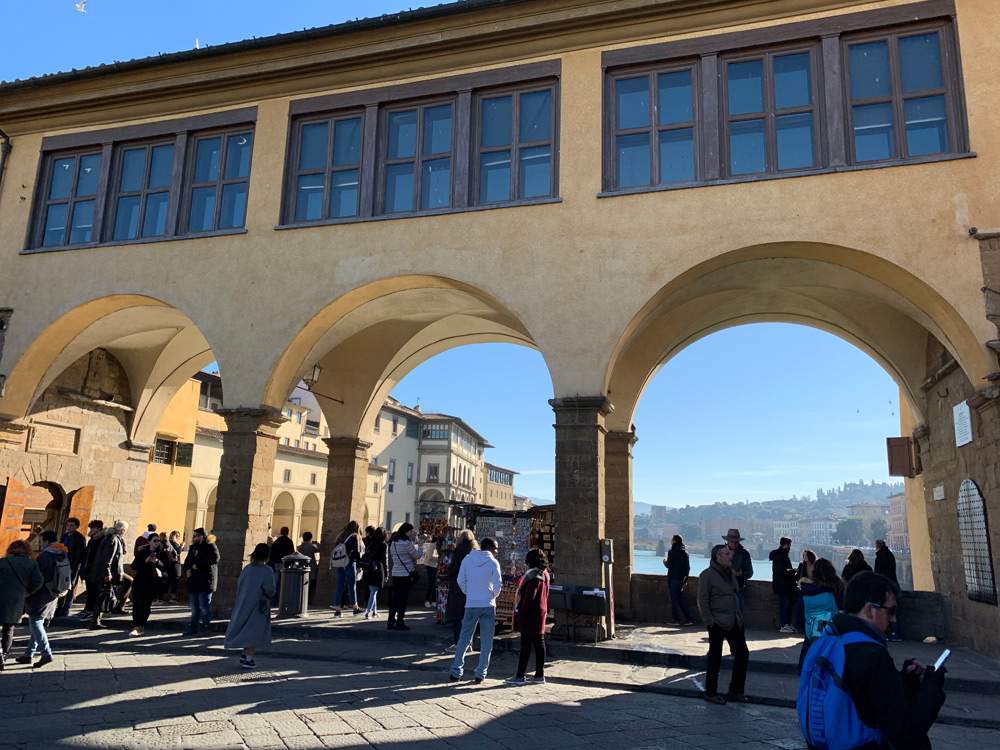Is 45 euros for the Vasari Corridor a lot? Open debate: the opinions of Paolucci, Daverio, Montanari, Feltri
The news of the reopening of the Vasari Corridor has caused much discussion, but not so much because of the possibility of being able to retrace the “secret passage” that led the Medici from the Uffizi to Palazzo Pitti (also because the hypothesis of a short-term reopening was already in the air), but because of the price established to be able to visit it: 45 euros in high season, 20 euros in low season. Figures about which a heated debate has been sparked, involving insiders and outsiders alike, and which has already spilled over into the press as well.
Starting with Il Fatto Quotidiano, which hosted the interventions of journalist Stefano Feltri, deputy editor of the newspaper, and art historian Tomaso Montanari, who stand on the two opposite positions. For Feltri, it is difficult to say whether 45 euros is a lot or a little, and saying that art should be free is noble, but it clashes with the reality that it entails costs: therefore, Feltri questioned whether it is fairer to have a low-priced ticket that surely corresponds to a higher demand, or a higher price that reduces the number of potential visitors, due to the fact that space in the Vasari Corridor is limited and demand could be far greater than the museum’s accommodation capacity. “Keeping the price low,” Feltri argues, “would only increase the share of demand that is not being met. The number of visitors to the Uffizi would remain the same, but receipts would be lower. A high price seems more rational: those 45 euros can help cover restoration costs or, as if they were a cross-subsidy, reduce the need for public subsidy for the museum as a whole or even allow lower prices to be kept in the sale of less profitable services.”
Not of the same opinion is Montanari, who, reiterating that there is no place in the world where cultural heritage can maintain itself and that citizens already maintain museums with taxation general, hopes that the Vasari Corridor will not become “a luxury good that manifests and celebrates social inequality,” and recalls that the space was born as an “eloquent sign of the loss of Florentine freedom” with Cosimo I “literally walking on the heads of the Florentines, no longer citizens but subjects.” therefore, for Montanari, returning the Vasari Corridor to everyone “would mean representing popular sovereignty in the most effective way, and making clear what the mission of cultural heritage is in a country that has equality as its constitutional compass.”
Critic Philippe Daverio and Antonio Paolucci, an art historian and former minister of cultural heritage and former director of the Vatican Museums, also spoke in the discussion today. Both spoke about the Corridor at the opening meeting of TourismA, the archaeology and cultural tourism fair being held at the Palazzo dei Congressi in Florence from today until Sunday 24: Daverio said that 45 euros for the Vasari Corridor does not seem a high price, and that people spend more to go see a soccer game. “I find this controversy about tickets quite strange,” Daverio said, as reported by AgCult agency. “The debate about whether the museum should be paid less is always open but I have come to a serious conclusion: the museum should be very expensive, but with discounts for categories, I have never understood why a Japanese person to go to the Seyschelles buys special clothes and spends an insane amount of money and to go to Pompeii he goes there in flip-flops paying nothing. Then in my opinion he should pay Pompeii like a trip to the Seyschelles.” Indeed, for Daverio the price could be even higher; if anything, there should be discounts for students, seniors and families.
Of the same opinion is Antonio Paolucci, who said that the 45 euro ticket is indeed “too little for a show like this: for the possibility of crossing the Vasari Corridor, a 50 euro sheet is really nothing.” Paolucci also stressed that he was also speaking as someone who knows the Corridor very well (the scholar was, in fact, also Superintendent for the Polo Museale Fiorentino).
 |
| Is 45 euros for the Vasari Corridor a lot? Open debate: the opinions of Paolucci, Daverio, Montanari, Feltri |
Warning: the translation into English of the original Italian article was created using automatic tools. We undertake to review all articles, but we do not guarantee the total absence of inaccuracies in the translation due to the program. You can find the original by clicking on the ITA button. If you find any mistake,please contact us.



























